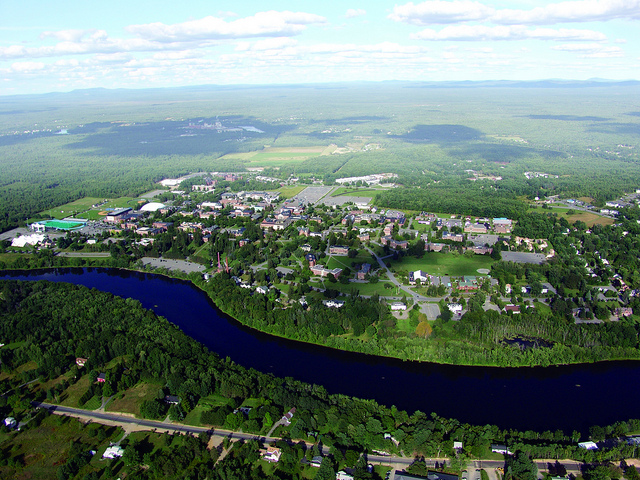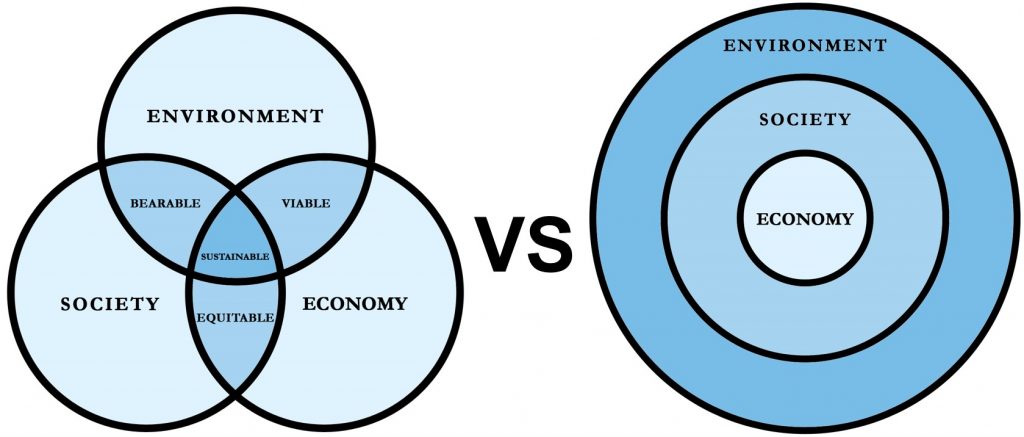What is Sustainability?
Sustainability is not just about renewable energy and energy efficiency. Realizing true sustainability requires an understanding of the connections between the environment, society and the economy. We must strive to achieve a sustainability state of mind that permeates all aspects of our day-to-day lives in local, national, and international domains.
A popular method of considering the sustainability state of mind is the triple bottom line approach. The three bottom lines, or pillars, are:
A common method of visualizing the pillars of sustainability is a Venn diagram, with each circle representing one of the three primary pillars. However, a more-accurate depiction of sustainability is achieved by using concentric circles to symbolize the pillars, with the most important aspect, the Environment, represented by the outer circle.
The Environment is of primary importance because a healthy ecosystem is required to nourish a robust society. Consequently, Society and Social Responsibility are of secondary importance. Economic Sustainability is third because a prosperous Economy cannot exist without a healthy and just society.
In reality there are many pillars required to support true global sustainability. Some of these include: the Institutional Capacity for systemic change; the Organizational Capacity for enacting change whilst preserving cultural values; and our own Personal Values – do we possess the moral intelligence to recognize when things are unsustainable and also have the resolve to change them?
We try very hard to define what sustainability is, but often we don’t go far enough. Many aspects of sustainability remain vague. Moral intelligence therefore dictates that we ask difficult ethical questions, such as: What do we mean by “healthy environment”? What does a “robust society” look like? How do we differentiate needs from desires? Is indefinite economic growth plausible? Is sustainability just for the benefit of human life? Is society doing enough? Am I doing enough?


